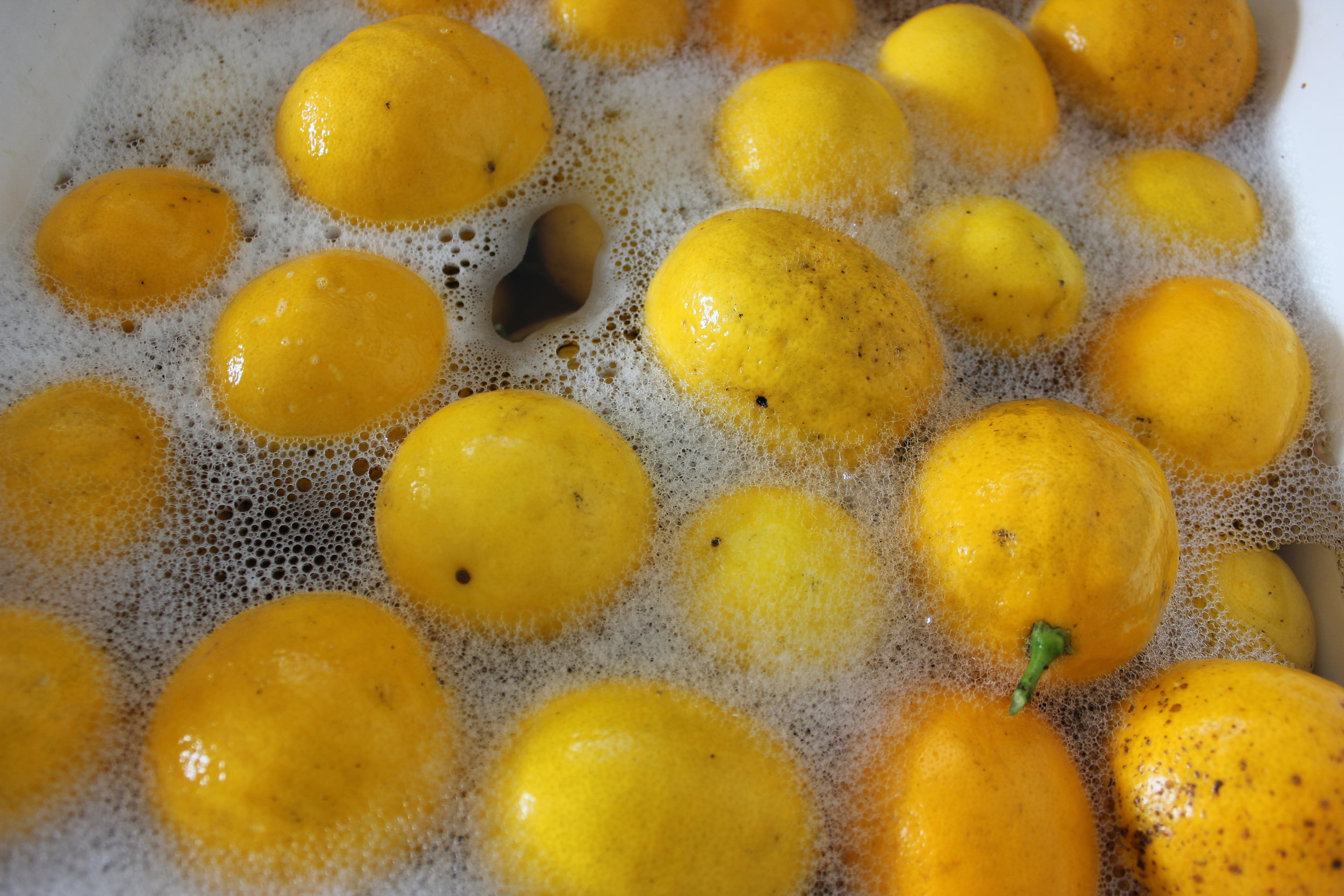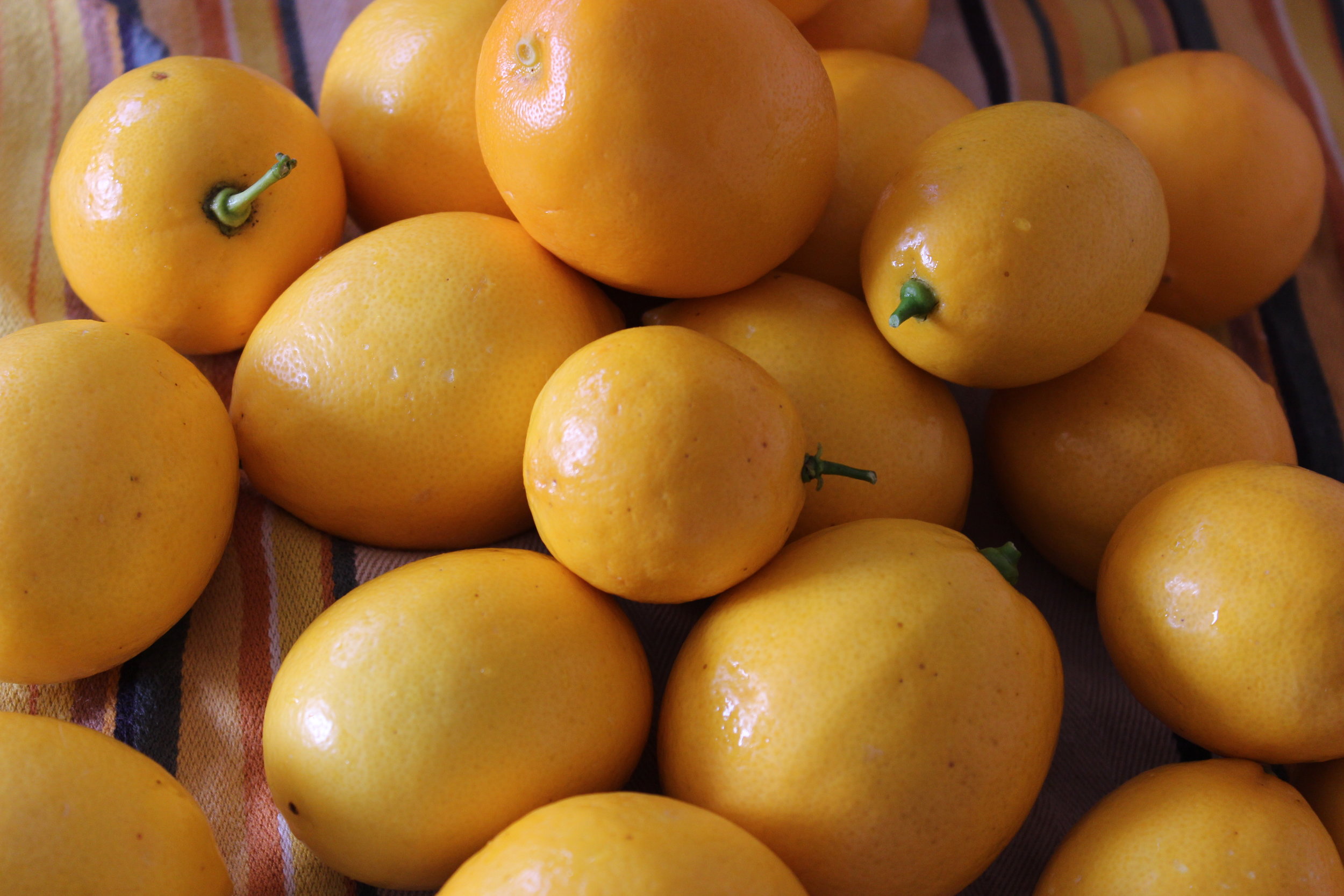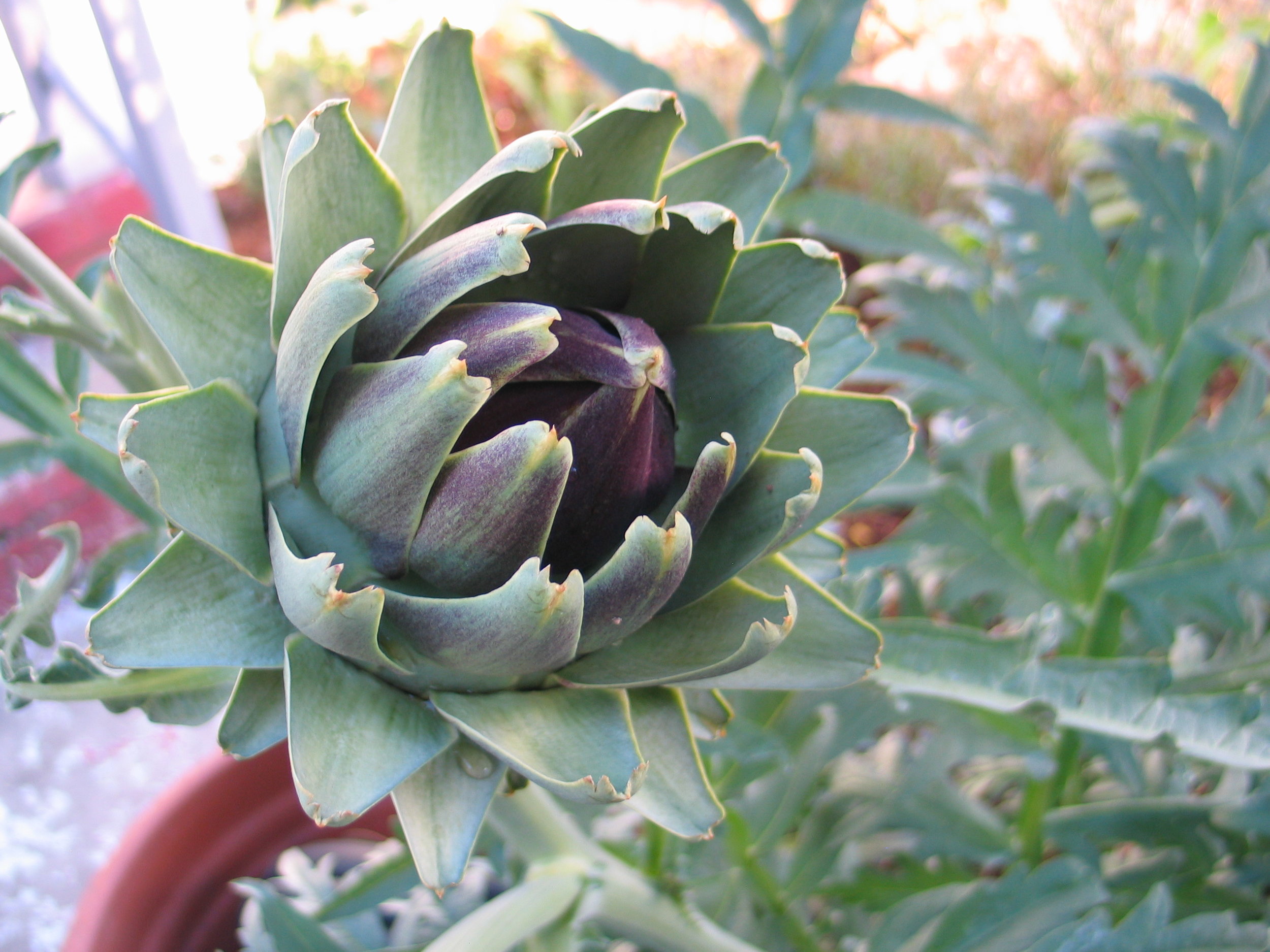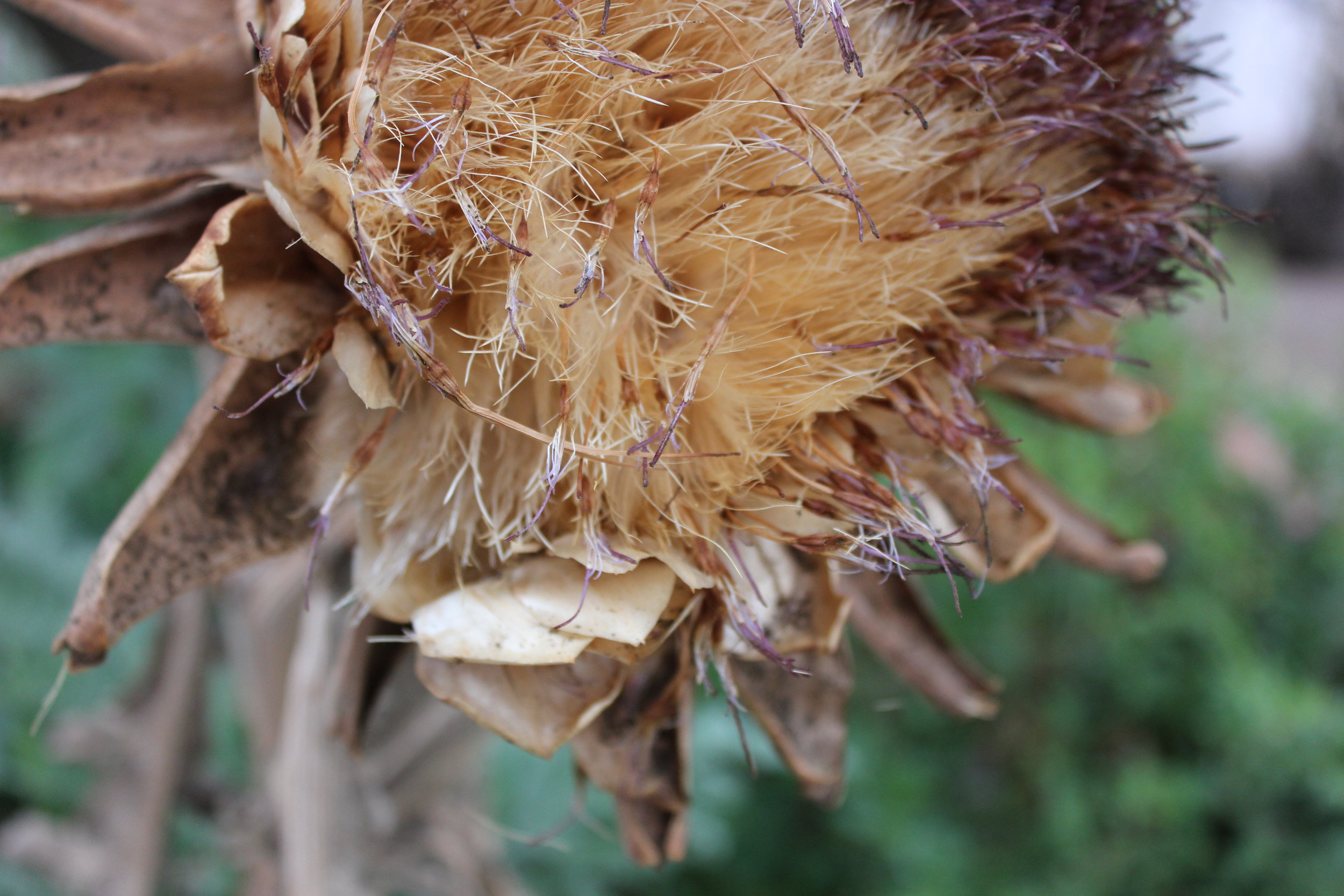My Meyer lemon tree produced a harvest this year that was truly more than I could deal with. I have given away five (5!!) grocery store bags full of lemons, and it still has more fruit on it than I am prepared to use! The photo above was taken after I harvested those 5 bags I gave away. I am sorry I didn't think to take a photo before, I was so overwhelmed with the insanity of it all. One of the friends I gave lemons to has a serious talent for cooking and making preserves, so I was glad to unload a bunch with her. She's made marmalade, curd, and preserved lemons (which I'd never heard of). When I saw the preserved lemons last week, all gorgeous and perky in sexy tall jars, I was so envious! Why haven't I seen this before? I learned this morning.... I was at Berkeley Bowl West for spices and I saw a jar, about 8 oz of preserved Meyer lemons for $13. GAWD, that's insane. I asked her for her advice on making my own, and today I did it. Here's why that is noteworthy: I dislike cooking. I mean it, I honestly don't enjoy it. I'd rather eat a head of lettuce than make a salad. It's the same thing, but with less effort and fewer dishes. I've joked for a long time that I eat ingredients or I nuke food, but I don't make it. However, stuffing lemons in a jar is something I can do, and it was nice to make something so pretty that I hope will help me fake having cooked real food someday.So, following is what I did based on her advice and also review of other recipes online:I washed the lemons with a little dish soap and the scrubby side of a sponge. I started out using a veggie scrubber based on one blog's advice, but it released so much lemon smell into the air, I figured I was releasing too many oils and damaging the peel so I switched to the gentler sponge. Next, I separated out the beauties (above, aren't they gorgeous!?) from the fuglies. I preserved the beauts in the juice of the not-so-pretty ones. They were beautiful on the inside, and that's all that matters!Next, I made a huge mess. I took pint and a half size Ball jars, sterilized them with the lids (not the rings you screw on, just the lids with that sealant around the edge) in the oven on a cookie sheet at 220 degrees for 10 minutes. I sliced the stems off the tops of the perfect lemons, flipped them over and quartered them but not cutting all the way through.I put 1 tbsp kosher salt in each, and smashed them into jars as densely as I could with some lemon wedges to fill in extra space. As I filled each jar, I added black peppercorns, cloves, cinnamon sticks, and bay leaves in various amounts and combinations. I juiced the ugly lemons and poured the juice over the top, taking care to add enough juice to cover all the fruit..... which started to float and made me mad, because I was told to cover the fruit with the juice, and they were bobbing up out of it .... then I added a skim of olive oil over the top, slapped on a lid and the screw-top ring thingy, and took pictures.My friends' preserved lemons didn't have salt sitting on the bottom like I do, I don't know how she managed that.... but whatever.On the right there, you'll see some preserved oranges. That is an experiment and I'll let you know how it goes. I've been told I can crack one of these open in a month and dice the fruit into ice cream, over fish, roast it with chicken, into a salad (hahaha!!), pretty much anything I want. A word of caution I will repeat from another site is not to add salt if you're using salt preserved lemons in your cooking as they'll bring enough with them.Stay tuned to see if the danged things are edible in about a month!
Artichokes' Awkward Phase (so what?!)
Artichoke plants can be real stunners. Their soft, enormous, sculptural bluish foliage is a real treat in a garden, especially in contrast with more subdued looking plants. These big dudes can make a real statement. One of my practices as a professional (which sounds better than 'I can't go to a nursery without buying something') is test growing plants and watching what happens over time. This summer I trialed Zinnias, Artichokes, several ferns, Marigolds, Scabiosa, Cosmos, Calendula, several roses, Gardenias, Heucheras, a few grasses, Daphne, a handful of Penstemons, a Magnolia, an Albizia, Sweet peas, and Lupines among others (this list is the survivors).The Artichokes, though, held a lesson. Googling Artichokes didn't tell me much about them. I found oodles of photos of the flower buds (the bit we eat) and foliage, tons of recipes and so forth... I found websites about how to grow them, where to get them, I even watched a video about growing them, but in my searches and plodding through books, I did not find anything about their life cycle. The best information I found was in Golden Gate Gardening, which talks about how to grow them in decent detail, tells you what to do, but does not give a complete picture of what the plant is doing while you're busy taking care of it.So, darling readers - here are my chokes from their glorious youth through that first awkward phase:May 7th: Here they are a few weeks after I put them in the ground - I bought three 4" pots of them and also three clearance rack 2" pots of dying plants. All of them grew so FAST! There really isn't much point in spending a lot on an artichoke plant, the little sad ones will do just fine if you get them in the ground where they really want to be. Sorry, I did not record when I planted them nor did I take photos of the sad little dudes.July 8th: Two months later, I've got several flower buds starting (above).July 28th: I let a few flowers open just to follow what they do. Out of the six plants I grew, despite being in partial shade, I had more artichokes than I could possibly eat.Aug 1st: I had taken the chokes off one of the plants (delicious) and it repaid me by doing this. It is a sad looking stemmy misshapen thing. Welcome to the Awkward Phase. I know they're perennial, some say they're semi-perennial, living only 5-6 years, others claim they can live much longer. I don't give a rat's patoot when getting a replacement plant can cost less than buying an artichoke for dinner and they grow so well.September 25th: The stems and leaves continued to fade and look like total crapola (read: turn brown and sticky) until about mid-september when the next growing season's leaves began popping up at the base of the plant. I left the flower on to watch it go to seed, and seed it did! I was tracking these big globs of brown fluffy seeds into the house and they were blowing around the yard. Rather than let artichoke babies take over, I took this opportunity to finally break the old stems off most of the plants at their bases and chuck them in the green waste bin, I left one alone to do its thing for another two weeks, when I bought a new camera.... .... and in Mid-October, my new camera helped me get a better photo of the fluffy seeds on one plant and new foliage on another.So what is my point? Artichokes are cool. What is even cooler is how dynamic they are. Many people don't have the patience to let a plant do awkward unsightly things in their garden, and that's okay - but you can't really understand your plants unless you understand their lives. Books don't do enough, web-searches will give you tons of beautiful photos, but nothing compares to growing something and being observant.Thank you!!




















